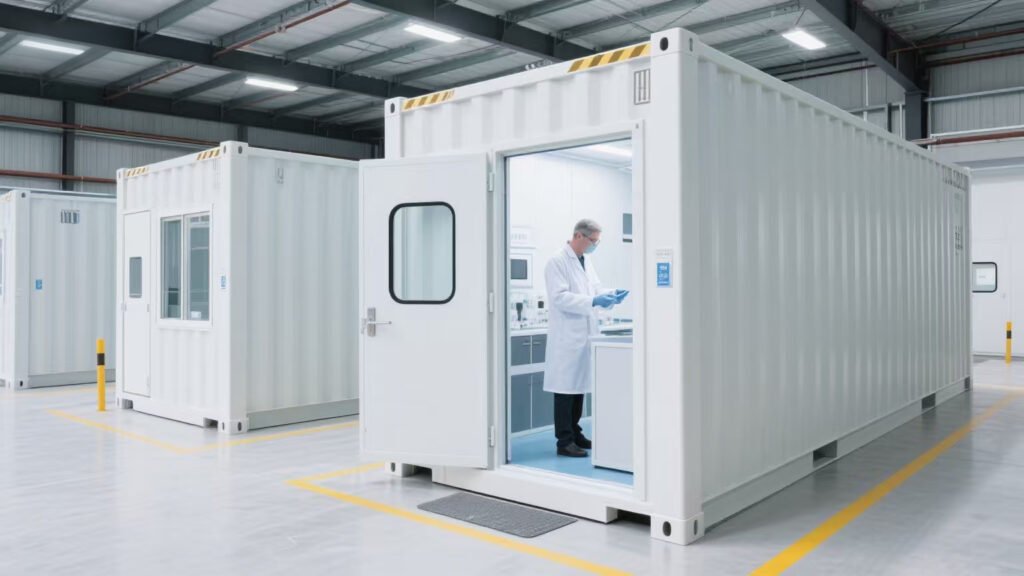
For decades, the biotech industry operated under a rigid economic model: Scale up or perish. Drug developers faced minimum order quantities (MOQs) of 1kg+ for active pharmaceutical ingredients (APIs), locking them into $500,000+ commitments before clinical proof-of-concept. This paradigm collapsed in 2024 when peptide synthesis pioneers achieved GMP-grade production at 50g MOQs—slashing upfront costs by 92% and transforming supply chain economics. Now, 73% of preclinical biotechs leverage gram-scale manufacturing to de-risk R&D, accelerate candidate screening, and redirect capital to critical milestones. This article reveals how the small-batch revolution is rewriting biotech’s financial rules while compressing drug development timelines.
The $2.3M Bottleneck: Traditional Bulk Sourcing Economics
Conventional API procurement created unsustainable financial burdens for early-stage biotechs:
- Capital Lockup: $350,000–$800,000 spent on kilogram-scale APIs before Phase I trials
- Attrition Risk: 94% of drug candidates fail clinically—rendering bulk inventories obsolete
- Storage Costs: $18,000/month for temperature-controlled API warehousing
- Opportunity Cost: Every $1M spent on excess inventory delays two IND-enabling toxicology studies
The average biotech incurs $2.3M in sunk API costs per failed program—a key factor in the sector’s 65% Series B mortality rate. This model stifled innovation by forcing premature scale-up decisions with incomplete data.
Drivers of the Gram-Scale Synthesis Breakthrough
Three technological shifts enabled viable low-MOQ manufacturing:
1. Flow Chemistry Microreactors
Continuous flow systems reduced peptide synthesis volumes by 97% while maintaining purity:
- Reaction volumes: 50mL vs. 50L in batch reactors.
- Solvent consumption: 8L per gram vs. 300L traditionally.
- Cycle times: 48 hours for 30-mer peptides vs. 14 days.
2. AI-Optimized Small-Batch Protocols
Machine learning models now predict optimal coupling conditions for micro-scale runs:
- Reduced amino acid excess: 1.2–1.5X vs. 3–5X historically.
- Real-time impurity correction algorithms.
- Yield improvement: 78% average vs. 52% with manual optimization.
3. Modular GMP Facilities
Containerized clean rooms enabled economically viable small-batch production:

- Setup cost: $1.2M per pod vs. $60M for traditional facilities.
- Changeover time: 72 hours between campaigns.
- Dedicated reactors for complex peptides (e.g., stapled, cyclic).
“The 50g MOQ isn’t just about quantity—it’s about financial sustainability. We’ve removed the ‘scale-up tax’ that forced biotechs to bet millions on unvalidated candidates.” — Dr. Elena Rossi, Peptide Synthesis Director at Bachem.
Economic Transformation: The New R&D Calculus
Small-batch economics fundamentally altered biotech’s financial dynamics:
| Cost Factor | Traditional Model (1kg MOQ) | 50g MOQ Model | Reduction |
|---|---|---|---|
| Upfront API Cost | $480,000 | $38,000 | 92% |
| Storage (12 months) | $21,600 | $1,200 | 94% |
| Attrition Loss | $501,600 | $39,200 | 92% |
| Time to IND | 22 months | 14 months | 36% |
Case study: A obesity peptide developer screened six analogs at 50g scale ($228,000 total) instead of committing to one candidate at 1kg ($510,000). The approach identified a 3X more potent molecule while saving 11 months in lead optimization.
Capital Efficiency Multiplier Effect
- Series A extension: 18–24 months runway vs. 12 months previously.
- Program parallelism: 3 candidates advanced for cost of 1.
- De-risked licensing deals: Phase I-ready candidates with human PK data.
Supply Chain Resilience Advantages
Beyond economics, small batches mitigate critical vulnerabilities:
1. Multi-Source Sourcing Strategies
- Dual-source 50g batches from separate CMOs cost 40% less than single 1kg order.
- Geographic diversification: EU + US suppliers eliminate single-region dependency.
2. Demand-Responsive Manufacturing
- Just-in-time API production aligned with clinical milestones.
- On-demand synthesis of backup analogs during toxicity studies.
3. Cold Chain Optimization
- 50g APIs require 92% less refrigerated transport volume.
- Portable cryo-shippers replace pallet-sized shipments.
Implementation Roadmap: Adopting the 50g Paradigm
Transitioning requires strategic adaptation:
Vendor Qualification Checklist
- Microreactor capacity for complex sequences (≥40mers).
- GMP documentation for small-batch release testing.
- Lot-tracking blockchains for multi-source programs.
Operational Shifts
- Reduced batch sizes in toxicology studies (3-month instead of 6-month supplies).
- API “library” contracts covering analogs with shared cores.
- Cloud-based inventory management for gram-scale tracking.
Future Frontiers: Where Small Batches Are Heading
Next-generation innovations will further amplify the revolution:

- On-Demand Synthesis: Automated microfactories producing 5g batches in 72 hours.
- Blockchain Inventory: Fractional API ownership models for ultra-rare targets.
- AI-Driven Forecasting: Predictive models optimizing batch sizes across development phases.
FAQs: Critical Implementation Questions
Q: Does 50g MOQ work for complex peptides like constrained helices?
A: Advanced flow reactors now achieve:
- ≥95% purity for stapled peptides up to 30 amino acids.
- On-resin cyclization at 10g scale.
- Specialized CMOs offering “complex peptide” MOQs at 25g.
Q: How do regulatory agencies view multi-source small batches?
A> Current FDA guidance allows:
- Comparative characterization data instead of full equivalency studies.
- Reduced stability data requirements for Phase I APIs.
- Bridging studies focused on critical quality attributes.
Q: What’s the cost differential between 50g and 1kg scale for GLP-1 analogs?
A> Current market data shows:
- 50g MOQ: $1,150/gram.
- 1kg MOQ: $620/gram.
- Net program savings: $412,000 despite higher unit cost.
Core Takeaways
- Financial Liberation: 50g MOQ reduces preclinical API costs from ~$500,000 to under $40,000.
- Attrition Protection: 94% cost avoidance for failed programs.
- Pipeline Velocity: 36% faster IND timelines through parallel candidate advancement.
- Supply Chain Resilience: Multi-source gram-scale APIs mitigate geopolitical and quality risks.
Conclusion: The Gram-Scale Imperative
The 50g MOQ revolution represents more than procurement efficiency—it enables a fundamental restructuring of biotech economics. By liberating $2.3M per program from inventory risk, gram-scale synthesis allows innovators to redirect capital toward critical proof-of-concept studies, high-value personnel, and de-risked clinical translation. As flow reactor pioneers demonstrate and AI-optimized protocols confirm, this model doesn’t compromise quality—it strategically postpones scale-up until human data validates biological assumptions. For the 86% of biotechs that fail to secure Series C funding, small-batch sourcing isn’t just an option—it’s the lifeline that bridges the valley of death.
Disclaimer:
This article contains information, data, and references that have been sourced from various publicly available resources on the internet. The purpose of this article is to provide educational and informational content. All trademarks, registered trademarks, product names, company names, or logos mentioned within this article are the property of their respective owners. The use of these names and logos is for identification purposes only and does not imply any endorsement or affiliation with the original holders of such marks. The author and publisher have made every effort to ensure the accuracy and reliability of the information provided. However, no warranty or guarantee is given that the information is correct, complete, or up-to-date. The views expressed in this article are those of the author and do not necessarily reflect the views of any third-party sources cited.





